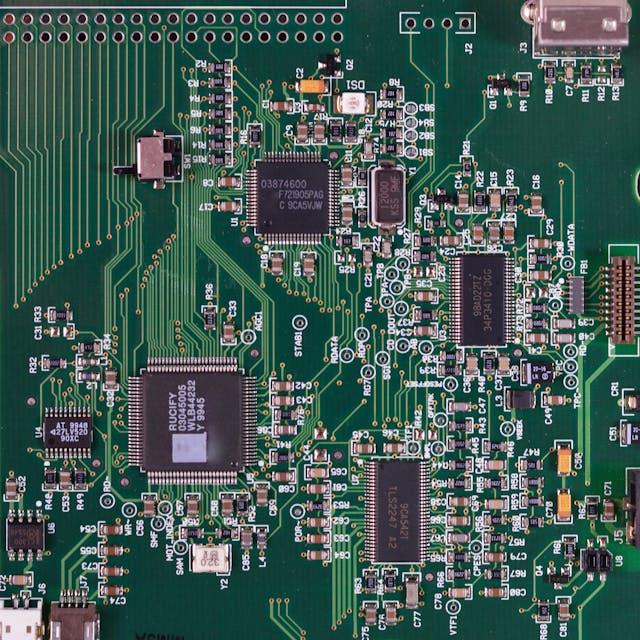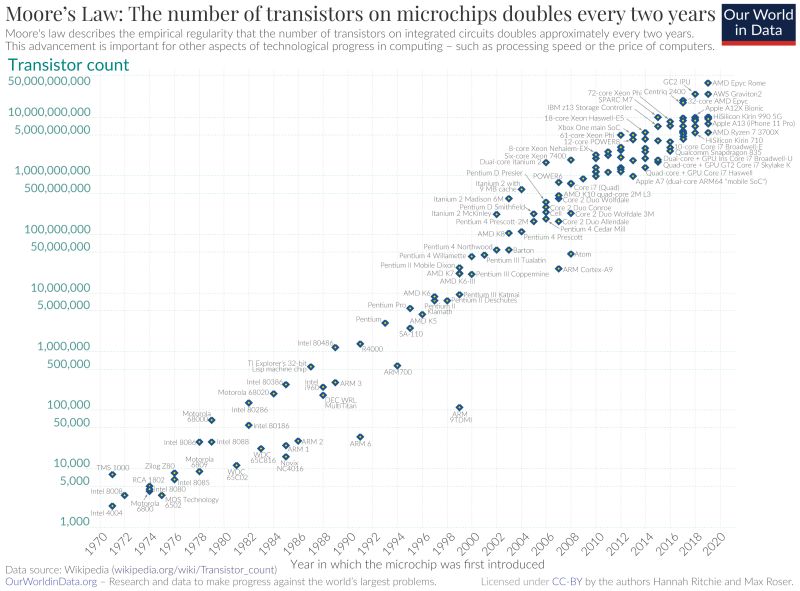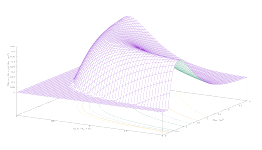
Photo by Miguel Á. Padriñán: https://www.pexels.com/photo/green-circuit-board-343457/
In 1965, in a famous article, Gordon Moore, co-founder of Intel, proposed that the number of transistors in an integrated circuit doubles approximately every two years. His consideration was based on the historical evolution of the construction technique up to the mid-1960s. This empirical relationship has since been known as Moore’s Law.
Currently, transistors reach dimensions of the order of 5 nanometers (nm), and there are already proposals for the construction of transistors of the order of nm by 2030.
To realize how small they are, consider that the diameter of the hydrogen atom (twice the Bohr radius) is 0.1 nm and that the wavelength of visible light is around 400 nm. This has led many to think that we are reaching a limit, as at these dimensions, quantum effects begin to be felt.
However, not everyone agrees with this prediction, and the following figure seems to confirm the validity of Moore’s Law even today.

Image license: https://creativecommons.org/licenses/by/4.0/deed.en





